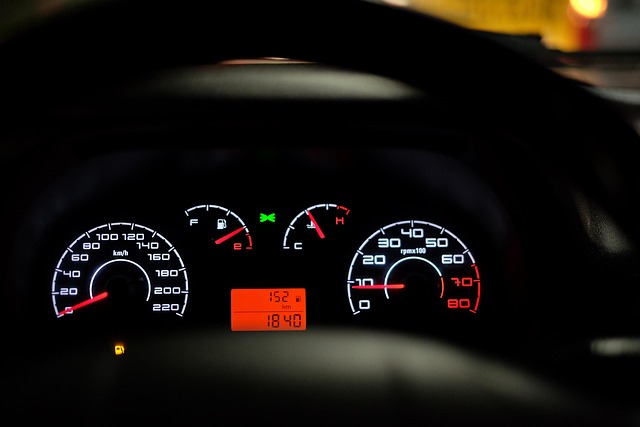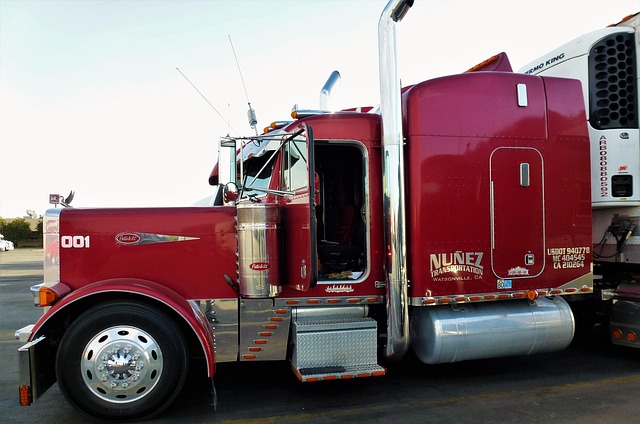Looking to register your car in California? This comprehensive guide walks you through the entire process, ensuring a smooth transition. From understanding the essential requirements for car registration in the Golden State to gathering all necessary documents, this article is your go-to reference. We also emphasize the importance of verifying your Vehicle Identification Number (VIN) using a trusted VIN verifier for accuracy. Follow these steps, and you’ll be on your way to securing your California vehicle registration in no time.
- Understand the Requirements for Car Registration in California
- Gather Necessary Documents for Vehicle Registration
- Verify the Vehicle Identification Number (VIN) Using a Trusted VIN Verifier
- Complete the California Vehicle Registration Application Process
- Pay the Required Fees and Obtain Your Registration Certificate
Understand the Requirements for Car Registration in California

Before you start the registration process, it’s crucial to understand what’s required for car registration in California. This includes ensuring your vehicle meets safety and emission standards set by the state. One essential step is obtaining a Vehicle Identification Number (VIN) verification, which can be done through a mobile VIN verifier or mobile VIN inspection service. These services allow you to check your vehicle’s history from the comfort of your home or garage, saving you time and effort compared to traditional methods.
In California, a car registration typically involves providing proof of insurance, paying the required fees, and submitting relevant documents. The process is streamlined for residents who own cars that meet safety standards, but it’s important to double-check specific requirements on the California Department of Motor Vehicles (DMV) website or through their mobile app. Using a mobile VIN verifier can help ensure your vehicle’s history is clean and eligible for registration, simplifying the overall process.
Gather Necessary Documents for Vehicle Registration

Before you begin the registration process, it’s crucial to gather all the essential documents for your vehicle in California. This includes proof of ownership, often in the form of a certificate of sale or a prior registration, along with your valid driver’s license and current vehicle insurance card. Additionally, you’ll need to provide a completed Vehicle Registration Application (DMV Form SR-175). One vital document that should not be overlooked is the Vehicle Identification Number (VIN) verifier, which ensures the authenticity of your car’s details.
For a seamless process, consider utilizing mobile VIN verification services that allow for digital inspection and documentation. This modern approach can save you time by eliminating the need for an in-person visit to the DMV and ensuring all vehicle information is accurately captured. Remember, having these documents ready makes the registration procedure faster and less cumbersome.
Verify the Vehicle Identification Number (VIN) Using a Trusted VIN Verifier

Before registering your car in California, it’s crucial to ensure the Vehicle Identification Number (VIN) is accurate and legitimate. A trusted VIN verifier can help you cross-check this critical data point. Using a reliable tool like a mobile vin verification service or even conducting a simple online vin inspection, you can verify that the VIN on your vehicle matches the information provided by the manufacturer. This step is essential to prevent fraud and ensure you’re submitting correct details when registering with the California Department of Motor Vehicles (DMV).
Accurate VIN data is not only important for registration but also plays a significant role in safety, insurance, and potential future ownership transfers. By employing a mobile vin verifier or any other trusted method, you can save time, avoid mistakes, and streamline the registration process, making it easier to navigate the California DMV requirements.
Complete the California Vehicle Registration Application Process

To complete the California Vehicle Registration Application process, you’ll first need to gather all necessary documents and ensure your vehicle meets state requirements. This includes proving ownership through a valid title or purchase agreement, insuring your vehicle with a policy from an approved provider, and passing a vehicle inspection that verifies its safety and emissions compliance. One crucial step is to obtain a Vehicle Identification Number (VIN) verifier, which can be done online or at a California Department of Motor Vehicles (DMV) office.
For added convenience, consider using a mobile VIN verification service. These services allow you to complete the necessary checks remotely, saving time and effort. Alternatively, you can opt for a mobile VIN inspection where a professional comes to your location to perform the required examinations. This flexibility ensures that registering your car in California is straightforward and hassle-free.
Pay the Required Fees and Obtain Your Registration Certificate

After completing your vehicle’s registration application, it’s time to settle the fees. In California, the costs involve a vehicle registration fee, emissions testing (if applicable), and a title fee if transferring ownership. The VIN verifier plays a crucial role here; you’ll use this tool to ensure accurate information for both your vehicle identification number (VIN) and its history.
By utilizing a mobile vin inspection or checking with the California Department of Motor Vehicles (DMV), you can verify that your car’s details are correct, including its mileage and past ownership. This step is essential before obtaining your registration certificate, which officially recognizes your vehicle as registered in California.
Registering a car in California is a straightforward process once you understand the requirements and have the necessary documents. By verifying the Vehicle Identification Number (VIN) using a trusted VIN verifier, ensuring all paperwork is in order, and paying the applicable fees, you can obtain your registration certificate swiftly. Remember to keep your documentation up-to-date for future reference and smooth vehicle ownership experiences.
